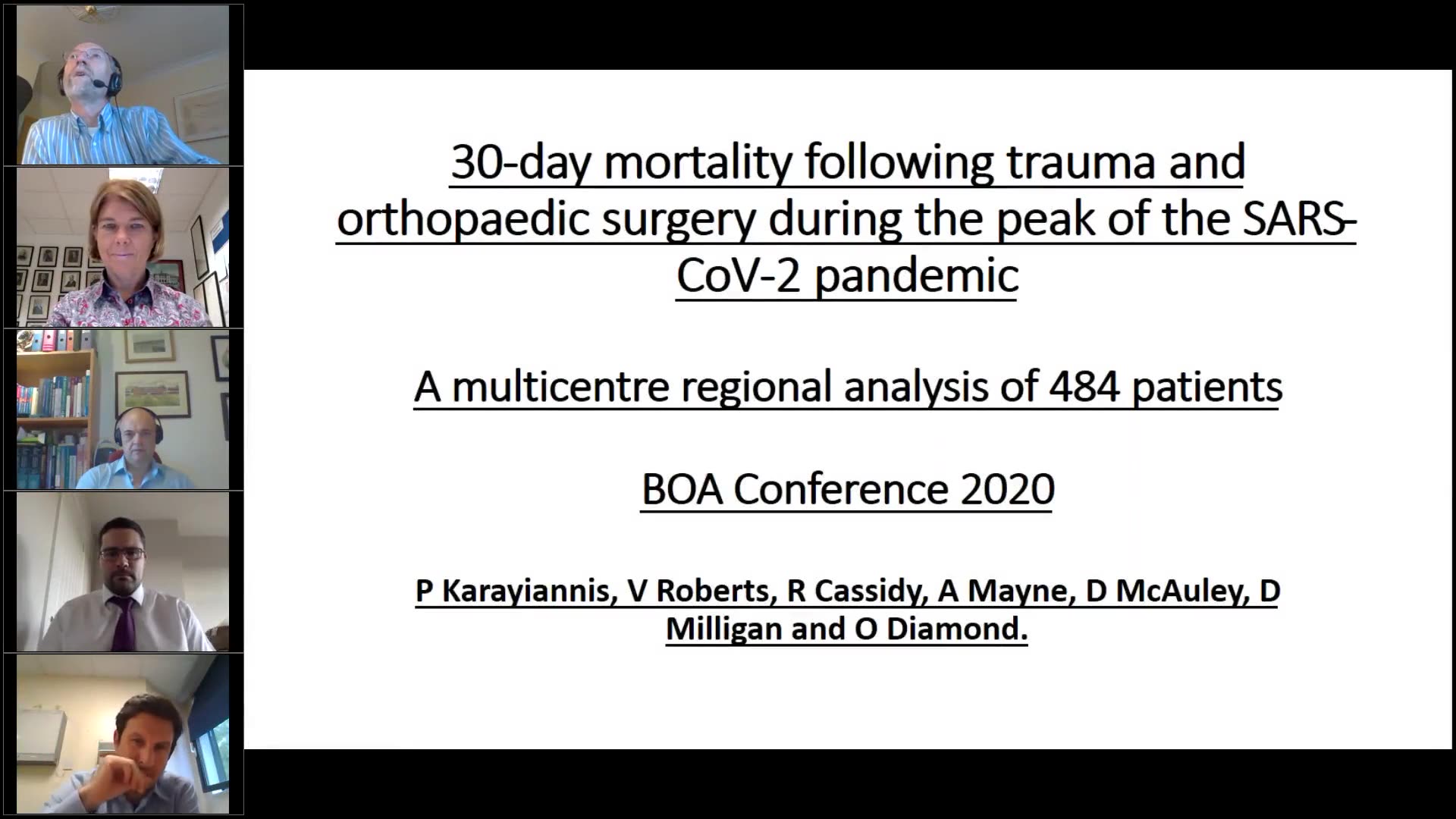Please login to view this media

- Talk
- UK
30 Day Mortality Following Trauma and Orthopaedic Surgery during the Peak of the SARS-CoV-2 Pandemic
Description
This video presentation, led by Bob Handley and presented by Paul Karayiannis, focuses on a study investigating the 30-day mortality rates following trauma and orthopaedic surgery during the peak of the SARS-CoV-2 pandemic. The research, which analyzes data from 484 patients across multiple centers in Northern Ireland, aims to shed light on the impact of COVID-19 on surgical outcomes.
Paul begins by contextualizing the effects of the pandemic on healthcare, particularly the postponement of elective surgeries, and emphasizes the importance of regional data for reinstating key health services. He highlights the high morbidity and mortality rates associated with COVID-19 during the perioperative period.
The aim of the study is to evaluate the mortality rates of patients undergoing surgery, especially those with neck of femur fractures, during the pandemic's peak, and to compare the findings with data from the previous year. The methodology involves a retrospective multi-center review using hospital databases and care records.
Key findings discussed include a 30-day mortality rate of 1.9% overall, with a higher rate among patients who tested positive for COVID-19. Karayiannis notes that most COVID-positive patients who died were elderly and suffered from severe comorbidities, indicating a significant risk of death if infected during the perioperative period.
The presentation also compares surgical outcomes between 2019 and 2020 for patients with neck of femur fractures, noting a reduction in operations and exploring potential factors contributing to mortality changes.
Throughout the discussion, Dr. Karayiannis proposes considerations for restarting elective services and emphasizes the importance of identifying individual patient risk profiles, especially for those with co-morbidities. Overall, while reassuring data exists for low-risk patients, heightened caution is recommended for higher-risk groups. The session concludes with a question-and-answer segment led by Sarah Stapley, reflecting on implications and outcomes of the presented research.